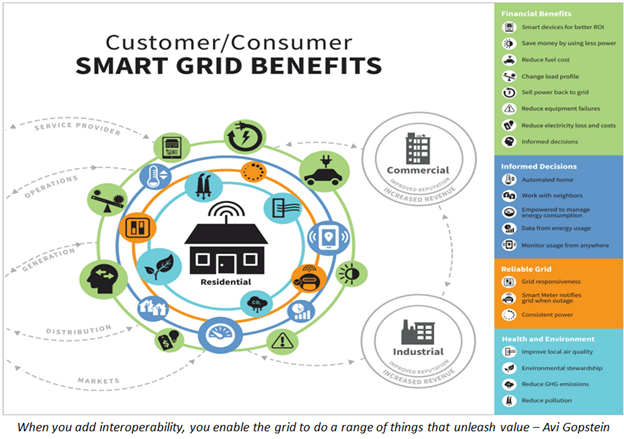NIST Leader, Researcher Explain Benefits of Smart Grid Interoperability and How to Achieve It

NIST's Smart Grid Group leader, Avi Gopstein, was featured on Smart Grid Today's podcast, released May 12, 2022. Ideally, said Gopstein, the smart grid's many disparate systems should communicate and work together. They must allow observation and understanding of the grid and communicate actions, like control or market signals.
Ultimately, a smart grid could do more than today's grid, said Gopstein. For example, smart thermostats could communicate with a utility, thus helping balance the grid. Also, customers could earn credits for renewable energy use. Interoperability unleashes value in the grid in previously unimaginable ways.
However, today's smart grid standards pose challenges for interoperability. Gopstein referenced NIST's review of 240 standards which found that 169 relate to interoperability, but only one in five have independent programs for testing and certifying interoperability. Some standards allow multiple ways to implement a communication protocol or information model. This creates a landscape in which interoperability is nearly impossible to assure without major customization.
To improve interoperability, said Gopstein, NIST worked with grid stakeholders to develop an interoperability profile process, which is described in the NIST Framework and Roadmap for Smart Grid Interoperability Standards, Release 4.0. The process results in an interoperability profile that specifies a way of achieving interoperability for a grid function.
NIST researcher Dhananjay Anand described the process of developing interoperability profiles at the IEEE 2022 Innovative Smart Grid Technologies (ISGT) conference, held in New Orleans, LA in late April 2022. Anand noted that the process focuses on a grid function – like communications – and considers those systems involved in achieving it, their related standards and implementation options, and a use case. The process then narrowly defines a way to implement these systems so that they work together and achieve the needed function.

